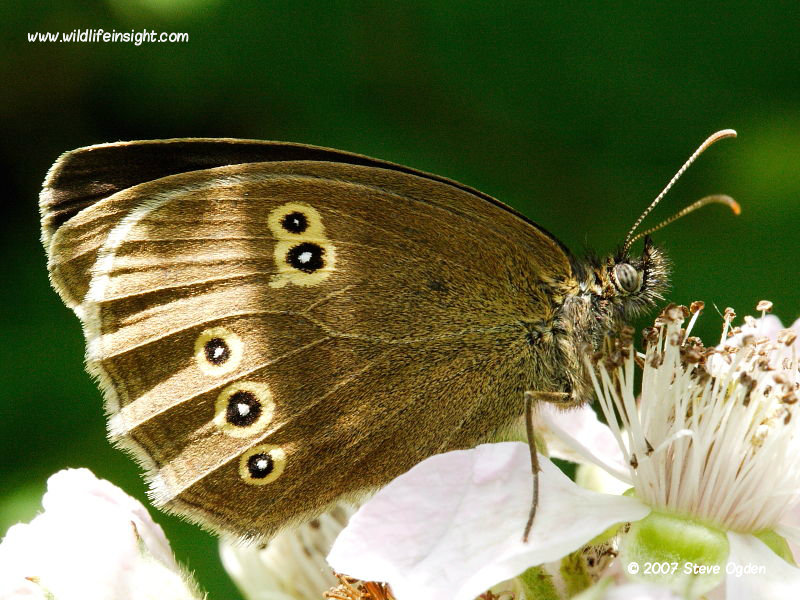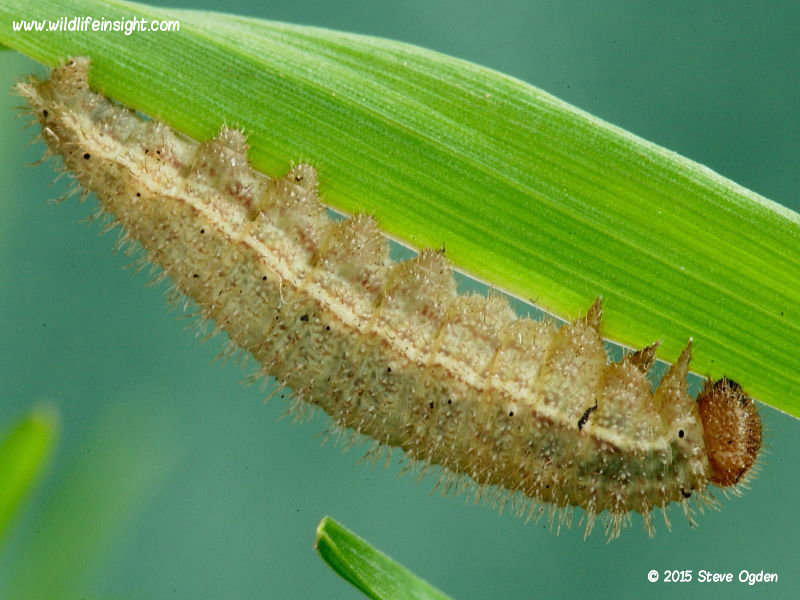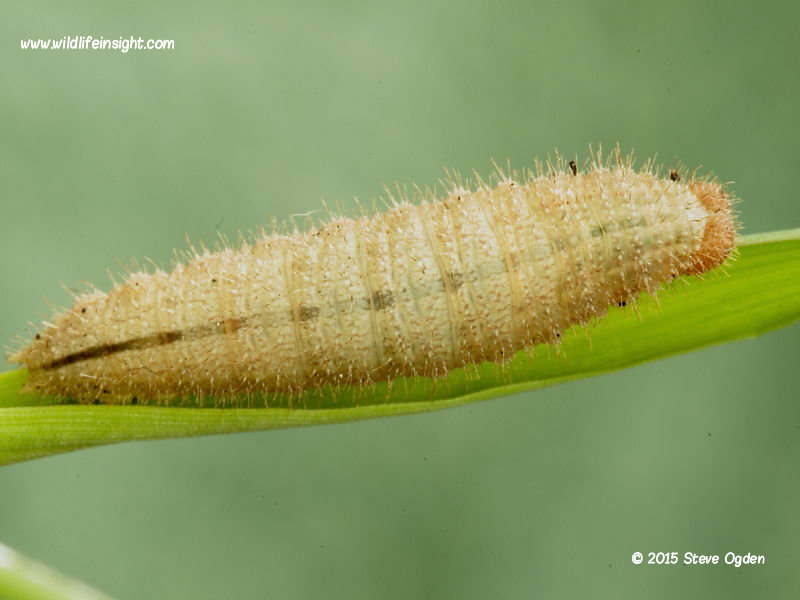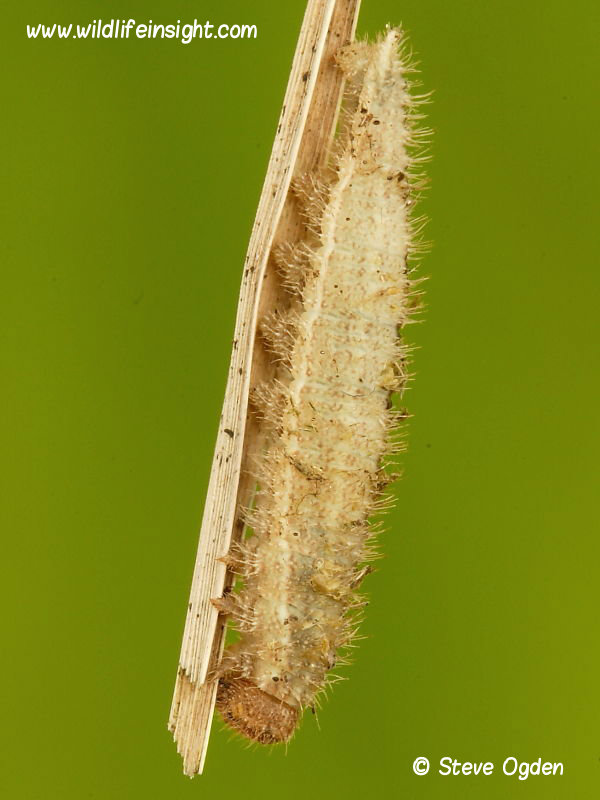Ringlet Butterfly, Aphantopus hyperantus
The Ringlet butterfly is a common species in much of England and Wales, becoming scarcer further north and absent from northern Scotland and parts of north west England.
In Europe its range extends to all but the hottest and driest parts of Spain and southern Mediterranean countries.
The species shows a preference for damp, partially shaded hedgerows and woodland edges where thick vegetation includes a variety of grasses, the larval foodplants.
The similarly sized Meadow Brown is frequently seen in the similar habitat.
Identifiation of the Ringlet Butterfly
The Ringlet Butterfly has a wingspan of c 50 mm.
Males are generally smaller and darker than the females.
Other butterflies occurring in the British Isles are featured in the British Butterfly galleries and species pages.
The eye-spots on the underside can vary in size and shape and may even be absent.
Several other closely related species occur in other parts of Europe, some of which are featured in the European Butterfly Galleries
Life cycle of the Ringlet Butterfly Butterfly, Aphantopus hyperantus
Single brooded with a flight period between late May and mid August.
Eggs are dropped freely into grasses where they settle low down at the base of the stems.
The eggs hatch within 2-3 weeks. The larval foodplants are a variety of coarse grasses such as Cock’s foot, False Brome, Wood-sedge and Tufted-hairgrass.
Caterpillars feed until late Autumn when they may enter partial hibernation depending on how cold the temperature. During mild days feeding continues.
The overwintered caterpillar commences feeding in the Spring.
Feeding takes place at night, hiding low down amongst the stems of grasses during the day.
By June it’s fully grown.
The Ringlet Butterfly caterpillar, Aphantopus hyperantus
The fully grown Ringlet Butterfly caterpillar is c 20 mm in length, which is small for a butterfly of its size. The body is ocherous, covered by fine hairs, with a pale sub spiracle line and ocherous anal points. The head is a light brown.
Other butterfly caterpillars are featured in the British Butterfly Caterpillar Galleries and species pages.
Moth caterpillars are featured in the British Moth caterpillar galleries
Ringlet Butterfly chrysalis, Aphantopus hyperantus
The 11 to 15 mm long chrysalis is formed low down, often on the ground, at the base of grass stems in a loose cocoon.
The butterfly hatches in about 2 weeks.
Recommended Butterfly Books
Pocket Guide to the Butterflies of Great Britain and Ireland – Richard Lewington.
The Cornwall Butterfly Atlas – Watcher, Worth and Spalding
The Complete Guide to British butterflies – Margaret Brooks and Charles Knight.
Collins Butterfly Guide of Britain and Europe – Tolman and Lewington.
The Colour Identification Guide to Caterpillars of the British Isles – Jim Porter.



